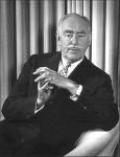Stonewall Jackson
SPECIAL ADVERTISING SECTION: The Home Front Map—Guide to Appalachia
A southern writer analyzes the handicaps unwittingly laid on the general by President Davis
You actually can spend a few moments in the past, if you’re willing to get out of your car—and if you’re lucky enough to meet the right guide
IN THE WORLD OF ALTERNATE HISTORY, IT ALL CAME OUT DIFFERENTLY—AND IN AN ERA WHEN REAL HISTORY IS TAKING SOME VERY STRANGE TURNS, THE GENRE IS FLOURISHING AS NEVER BEFORE
COMING TO TERMS WITH THE MOST COMPELLING AND MYSTERIOUS OF CIVIL WAR HEROES
How to know the unknowable man
During three days in May 1863, the Confederate leader took astonishing risks to win one of the most skillfully conducted battles in history. But the cost turned out to be too steep.
The first modern war correspondent won a nickname, much Northern ill will, and a lasting reputation out of his account of a famous battle





